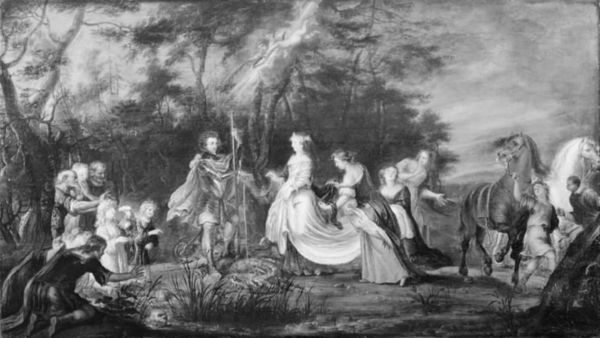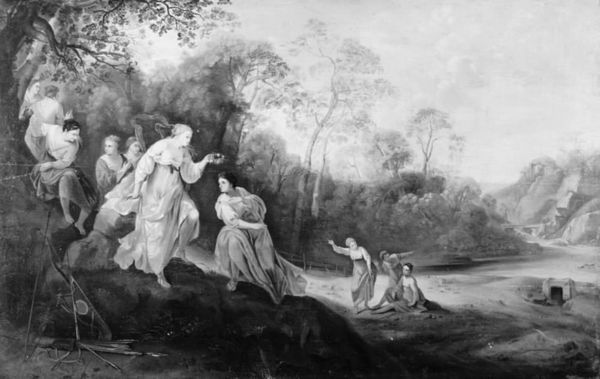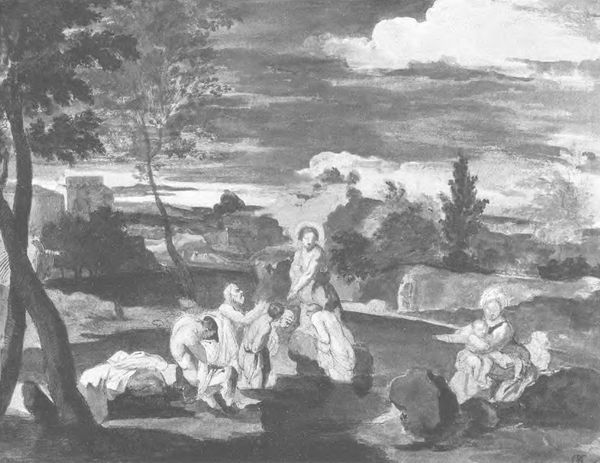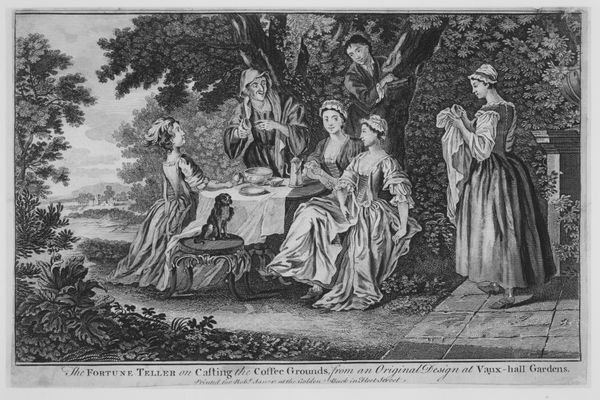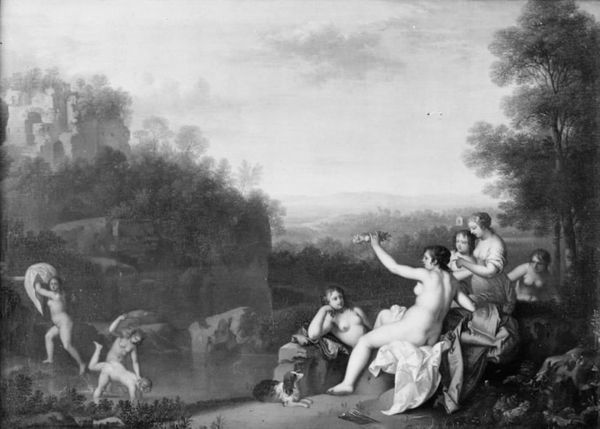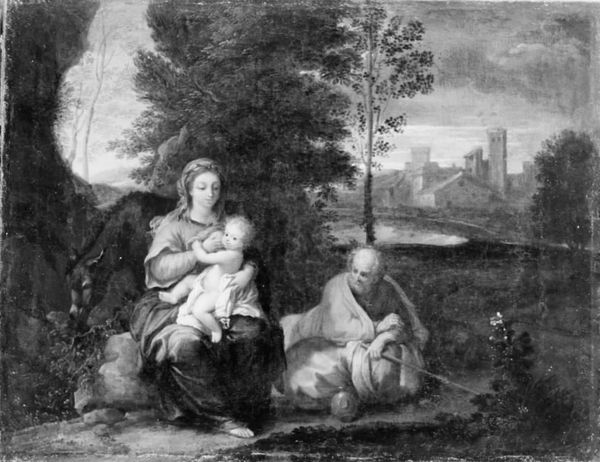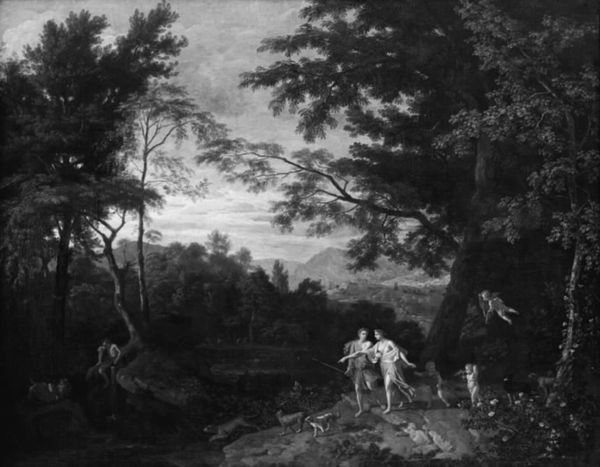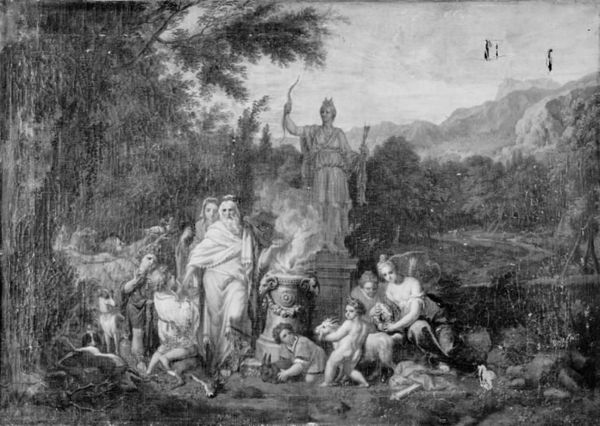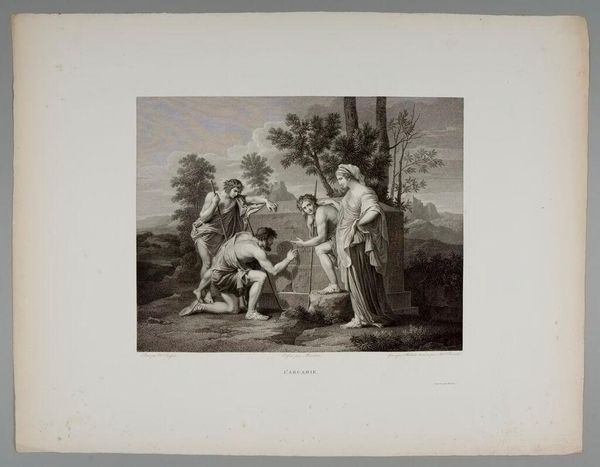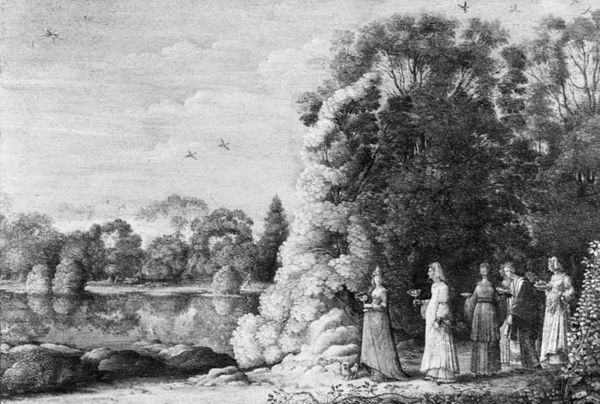
painting
#
neoclacissism
#
painting
#
landscape
#
figuration
#
charcoal art
#
history-painting
#
academic-art
Dimensions: 47.5 cm (height) x 65.5 cm (width) (Netto)
Curator: Nicolai Abildgaard, a leading figure in Danish Neoclassicism, created this scene titled "The Finding of the Infant Moses" around 1790. What strikes you most about it? Editor: Immediately? A sort of...serene chill. Even without color, there’s this very composed, almost staged feeling. It’s like a classical tableau vivant frozen in time. Dramatic, sure, but also somehow distant, right? Curator: Indeed. Note the frieze-like arrangement of figures in the foreground and the idealized, almost sculptural treatment of their bodies and drapery. This is typical of Neoclassical painting which drew heavily from antique sculpture and architecture. The figures are not simply arranged; they’re composed according to rigorous principles of balance and order. Editor: Right, it's balanced to the point where it feels less like witnessing a spontaneous discovery and more like viewing a meticulously crafted composition. Even the landscape feels subordinate to the figures. The play of light seems calibrated to enhance the drapery of the protagonists, which adds to that cool detachment, I think. It’s lovely, technically, but a bit emotionally reserved. Curator: Precisely. This restraint is quite deliberate. Abildgaard, deeply immersed in classical aesthetics, emphasizes clarity, order, and moralizing themes drawn from historical and mythological sources. This episode from the Book of Exodus gains a particular resonance, given Moses' later role in delivering laws and societal structures to his people. It's history painting functioning as a moral exemplar, presented with intellectual rigor. Editor: Makes sense. You feel the "intellectual rigor," definitely. It invites contemplation more than, say, emotional involvement. Though, I am drawn to the woman shielding her eyes near the mountain – as though some higher being revealed that location to her. I love the way the image asks us to imagine what comes next for baby Moses after this scene. What kind of ruler will he be, raised as nobility but by chance also retaining the roots of a servant. It all leaves you with much to think about... Curator: A fitting endpoint, as contemplating his impact certainly reflects Abildgaard's broader commitment to using history to provoke such lasting ethical questions. Editor: Beautifully put, yes. I feel now I can approach history painting as less austere but indeed deeply embedded with social implications and even philosophical undertones. Thank you for highlighting that.
Comments
No comments
Be the first to comment and join the conversation on the ultimate creative platform.
